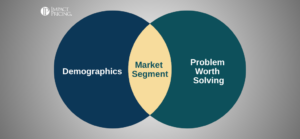Peloton’s new CEO, Barry McCarthy, is trying to get the company back to profitability. He is testing a new pricing model in some locations where instead of buying a bike, for around $2,000, you can subscribe for $60 to $100. This includes the bike.
https://www.cnbc.com/2022/03/10/peloton-tests-new-pricing-model-as-it-tries-to-win-customers.html
Here are a couple of pricing lessons that jump out due to this article.
First, notice the CEO chooses the pricing model. Yes, I’m sure he gathered a lot of input from many people, but in the end, he made the decision. Big strategic pricing decisions are often made at an executive level. These are important and can make or break the company. Executives must be involved.
Second, they are making a decision that is difficult for hardware companies to make, but demonstrates confidence in their offering. They are not covering the costs of their hardware up front. What this says is, “we believe you will love our overall solution so much, you will stay with us for a long time and we will more than cover the costs of our bikes.”
CFO’s hate this strategy until it’s proven to be effective. Their job is to mitigate risk, and this seems risky. However, in Peloton’s case, it may not be so risky. They have a lot of inventory that isn’t selling. Inventory is a sunk cost, so this strategy gets at least some revenue from the inventory.
Third, changes in market conditions prompt revisiting pricing. You should frequently revisit your pricing strategies and tactics, but big market shocks practically demand reconsideration. In Peloton’s case, they went from huge demand because Covid kept everyone in their houses to much lower demand once people could exercise at gyms or outside.
Fourth, supply and demand can drive your pricing strategy. It seems that Peloton’s previous strategy was right for the time. They had difficulty keeping up with demand for their bikes, so selling them as an initial buy-in made a lot of sense. They may have been able to charge even more. This upfront price for the bikes also helped them immensely with cash flow.
Then, supply and demand flipped. They ramped up manufacturing at the same time demand fell off. Now, they need more subscribers. Removing the initial buy-in expense should grow demand again. One of the huge advantages of subscription products is that buyers can get into the product inexpensively and try it to see if it works for them. Peloton’s new pricing strategy does exactly this.
I wish Barry luck with his new strategy. It’s fun to look at pricing strategies to see what prompts them. There is always something to learn. What did you learn?















